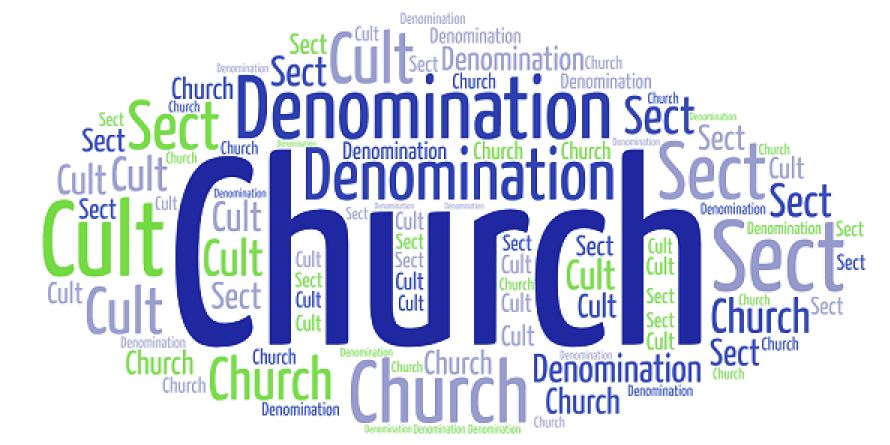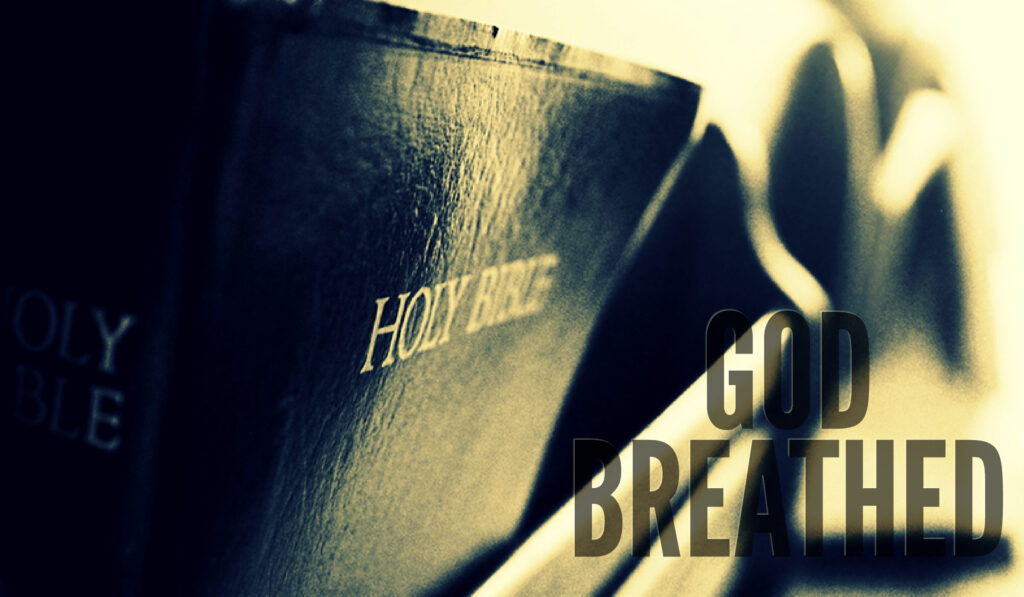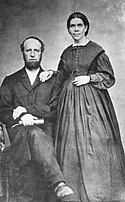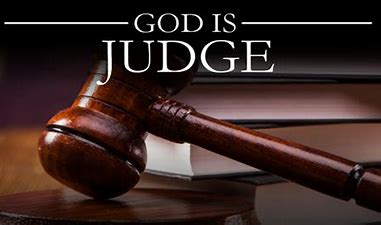Christian Organisation or Cult
Scripture: – “I can’t impress this on you too strongly. God is looking over your shoulder. Christ himself is the Judge, with the final say on everyone, living and dead. He is about to break into the open with his rule, so proclaim the Message with intensity; keep on your watch. Challenge, warn, and urge your people. Don’t ever quit. Just keep it simple. You’re going to find that there will be times when people will have no stomach for solid teaching, but will fill up on spiritual junk food, catchy opinions that tickle their fancy. They’ll turn their backs on truth and chase mirages. But you, keep your eye on what you’re doing; accept the hard times along with the good; keep the Message alive; do a thorough job as God’s servant.” – “2 Timothy 4:1-4” the Message
Introduction: –
The term ‘cult of Christianity‘ is used of a group, church, or organisation whose central teachings and/or practices are claimed to be biblical or representative of biblical Christianity, but which are in fact unbiblical and not Christian in nature.
In a study of Christian Doctrine, relating to any group of individuals, and particularly the beliefs of pseudo-Christian cults, it is important to lay a biblical foundation.
So “why should?”, and “what right has a Christian Minister to carry out such a study?” The right I believe is conveyed and encouraged by none other than the Apostle Paul.
Paul in his writings, very clearly pointed out and instructed Timothy, to guard, protect and instruct the people of God, who were in his care, to reprove, rebuke, and exhort with all long-suffering and doctrine “2 Timothy 4:1-4” Timothy had a specific responsibility to, “refute” strange and erroneous doctrines, that would split, agitate, and segregate Gods people, and every Minister of Jesus Christ also has that self-same responsibility, laid upon them.
The Bible clearly informs its readers that the devils desire is to “Kill, Destroy and Steal” – “John 10:10” and he does this most effectively through false teachings and especially where there is no “fundamental teaching” of doctrine which is so prevalent in the Bride of Christ today.
In this study on the Seventh-Day Adventist Movement and their teachings, it is my intention to reveal them in their subtle and oft time deceptive (although often innocently) doctrinal views and law ridden practises. They do not believe in the Trinity and also are Post-tribulation Premillennialism and hold other un-biblical doctrines.
To be a “Christian Movement” it is essential that all the mainstream and Biblical fundamental truths are held as sacrosanct. The introduction of spurious and erroneous ideas only serve to nullify and dilute the truths being propagated, and at times can change the truth into “another Gospel” – “Galatians 1:6-9”
The introduction of “spurious and erroneous ideas” are exactly what has occurred in the Seventh-Day Adventist Movement. The introduced ideas, have produced a Cancer like Disease, changing them from a “Christian Cult” into a “Non-Christian Cult.”
Whilst however stating that the Adventist Movement is a “Non-Christian Cult”, it would not be correct to contend that many of the adherents to their views are not Christians. In the same way as there are many true Christians within the Roman Catholic Faith, which again is a “Non-Christian Cult”. Likewise, there are most certainly many non-Christians, who hold doctrinal views mentally, who are affiliated with the Mainstream Churches.
The initial work of salvation is not wrought by the mental appreciation and acceptance of doctrinal beliefs, but by the acceptance of Jesus Christ as Saviour and acceptance of Him as Lord and the confession of Him as Lord also – What does it say in the following two Scriptures? “John 3:16” – “For God so loved the world that he gave his one and only Son, that whoever believes in him shall not perish but have eternal life” and “Romans 10:10” – “For it is with your heart that you believe and are justified, and it is with your mouth that you profess your faith and are saved. For it is with your heart that you believe and are justified, and it is with your mouth that you profess your faith and are saved” NIV
Most Adventist Theological Structure fits into mainstream Christian teaching. However, the introduction of “spurious and erroneous ideas”, have gone through the whole “lymph gland system”, of their structure, resulting in the corruption of the whole.
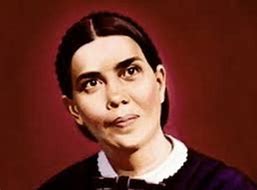
Ellen G. White (1827-1915) is the Adventists main inspiration, spiritual leader, and recognised prophetess. She, doctrinally speaking, is the diseased cell, which caused the main corruption. Although shakily inaugurated, the movement could have proven to be a Christian Organisation, that would have been a force to be reckoned with, in a lost and fallen world.
Seventh-Day Adventists Background
Resources
The Adventist movement today, according to figures provided by Harold J. Berry and Walter Martin some time ago, claim just over 8,000 ministers Worldwide and 2.8 million members, in approximately 20,000 Churches.
In the United States in 1988 there were reported to be 666,199 members, with an increase from 464,276 in 1975, an increase in only 13 years of 201,623 or 44.42%, and an average individual church membership of 33 persons.
In April 1988 they had 50 Publishing Houses, which produced the American Review and Herald materials, in various languages throughout the world. They also ran a correspondence course in which over 5million people had participated.
The Publishing Houses produced two main magazines, these being “The Signs of the Times” and “These Times”, and in 1985 these had a circulation of 500,000 copies a month. It can only be supposed that as the years have gone by, the circulation has increased.
There are approximately 14 million Seventh-day Adventists worldwide, with perhaps another 7 million people more loosely associated with the Church. There are nearly 25,000 Seventh-day Adventists in the UK, of which approximately 13,000 live in London where there are 60 congregations. (2005 statistics)
The Church is heavily involved in education with almost 7,000 schools around the world and over 100 colleges and universities. The Church also operates 785 medical facilities (2005 figures). The Adventists use the mediums of Television and Radio to propagate their ideas and views. The “Voice of Prophecy” programme is heard on numerous stations in multiple languages. “Faith for Today” is their official Television programme and in the U.S.A., this is broadcast on multiple stations, and also in other countries.
Adventists have recognised the need to train young people, and they have founded educational establishments on all levels, and these have a good report for excellency. The high moral principles and educational excellency leads to great numbers of Adventists and Non-Adventists enrolling in their educational institutions worldwide, the number of these exceed 5000.
Personalities and Foundations
The Seventh-Day Adventists or S.D.A.’s as they are often known started with a William Miller (1782-1849), a Baptist Minister. William Millers group initially were termed “Millerite’s” and was the forerunner of the Adventist Movement that we have today.
In the early part of the 19th century the doctrine of the Return of Jesus Christ had a major re-emphasis throughout most of the Christian Church, in Britain and the Continent. The time was commonly called “The Great Second Advent Awakening”. Before long, the views that sprang up and the renewed enthusiasm in Christ’s return, spread to the United States and started to penetrate into the religious thinking, of their theological circles.
Very briefly here it would be profitable to elaborate on the teaching that grabbed the imagination of the day. The nucleus of the second coming revival teaching was built upon chapters eight and nine of the Book of Daniel, where it speaks of the “70 Weeks and 300 Days”, plus “The Abomination of Desolation”.
The three topics are interesting in their own right, but it is sufficient to say that the 2,300 days of Daniel, was regarded, prophetically to mean 2,300 years, (e.g., A Day with the Lord is as a thousand years) – “And this one thing let not be unobserved by you, beloved, that one day with the Lord is as a thousand years, and a thousand years as one day” – “2 Peter 3:8” Youngs Literal Translation.
Many eminent teachers accepted the interpretation and were expecting the return of Jesus Christ in 1843. It is a common argument used by futurist in both Amillennial and Dispensational camps that a day with the Lord is a thousand years. By taking this verse to mean that a literal day is a literal thousand years, they offer it as proof that Christ could not return in the first century. In other words, it cancels out all imminent time statements.
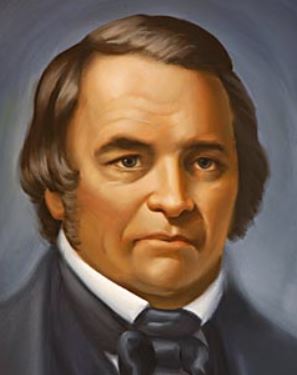
William Miller, who lived in Lower Hampton, New York, accepted this interpretation, in total, and did so, it must be said, in all sincerity. The “Advent Movement”, as distinct from the “Seventh-Day Adventist Movement” in the 1840’s was fiercely promoted by William Miller, who from 1818 taught, without any apparent self-doubt, that in 1843 Jesus Christ would return.
William Miller stated “I was thus brought in 1818 at the close of a two-year study of the Scriptures to the solemn conclusion that in about twenty-five years from that time all the affairs of our present state would be wound up” – (Francis D. Nichol, The Midnight Cry (Washington D.C.: Review and Herald, 1944 page 35).
It was further reported in the Signs of the Times magazine on January 25th, 1843 “I believe the time can be known by all who desire to understand and to be ready for His coming. And I am fully convinced that sometime between March 21, 1843 and March 21, 1844 according to the Jewish mode of computation of time, Christ will come and bring all His saints with Him, and that He will reward every man as his work shall be”.
After further consideration, Miller and his colleagues set the exact date as October 22, 1844. They did not consider the following Scriptures, had they done so, the embarrassment that followed, could have been avoided.
“Matthew 24:36-42” – “Mathew 24:44” – “Matthew 25:13” – “Mark 13:33” – “Acts 1:7” If Jesus Himself did not and could not know the time, how foolish it was for His servants to contend that they did.
Earlier I mentioned that William Miller was sincerely convinced, of the truths he was encouraging, and whilst in hindsight it would be easy to conclude that he was a “religious nut or fanatic”, remembered however that the “Advent Awakening Movement”, which hit the United States in a storm, from Europe was backed by a phenomenal degree of biblical scholarship. Miller had the courage of his religious convictions to publicly state what many other studiers of prophecy believed.
Who was William Miller? He was born on February 15th, 1782 in Pittsfield Massachusetts. Whilst as a child he and his family moved to Lower Hampton, New York. His Mother was a deeply religious woman and was tremendously burdened in her spirit to see William converted, which he was. Miller entered training as a Baptist Minister. He was a deeply religious Christian, known for his honesty and forthrightness.
It would be wrong to condemn him to greatly, as he was accompanied by many internationally known scholars during the period 1843-1844. He unfortunately, had a blind spot, with others, regarding Prophetic Interpretation and chose to ignore the foolhardy idea of “date setting”.
As March 21st 1843-44 came and went, the followers of Miller, naturally, sought enlightenment from their leader, and his honest and forthright response is seen in the statement he made in “Sylvester Bliss Memoirs of William Miller, Boston, MA: np. ,1853 page 256”… “Were I to live my life over again, with the same evidence that I then had, to be honest with God and man I should have to do as I have done. Although opposers said it would not come, they produced no weighty arguments. It was evidently guesswork with them; and I then thought, and do now, that their denial was based more on an unwillingness for the Lord to come than on any arguments leading to such conclusions. I confess my error and acknowledge my disappointment; yet I still believe that the Day of the Lord is near, even at the door; and I exhort you, my brethren, to be watchful and not let that day come upon you unawares.”
The followers of Miller were Christians, who whilst gullible, were as many are, not taught in the truths of Scripture and unprepared to provide understanding for themselves through careful study of the Scriptures. Had they been so minded they would have avoided getting caught up in such erroneous teachings.
Miller, after the initial embarrassment, and in a sincere desire to reconcile his ideas and interpretations then endorsed an interpretation designated “The Seventh Month Movement”. It held that Jesus would return on the 10th day of the 7th month according to the Karaite reckoning of the Jewish calendar, or October 22, 1844. This of course again did not occur, and a Millerite leader Dr. Josiah Hitch said, “It is a cloudy and dark day here, the sheep are scattered, the Lord has not yet come”.
The final failure of Christ’s coming led to the Millerite’s disbanding, the people although disillusioned, gathered into other groups, the most prominent being initially called the “First-Day Adventists”, and latterly as the three main groups joined into one group, the “Seventh Day Adventists”. Miller at no stage endorsed any of these new groups and in fact spoke out against them and refuted the three main areas of their teachings: –
- The Seventh Day Sabbath
- The Doctrine of Soul Sleep
- The Doctrine of the Final and Utter Destruction of the Wicked
In addition, he did not adhere at any stage to the two other areas of their teaching: –
- The Sanctuary
- The Investigative Judgement
all of which we shall look at further.
I will now, briefly bring some information relating to the respective leaders, of the various groups I have mentioned, which I trust will provide a more thorough understanding of where their emphasis on doctrine arises.
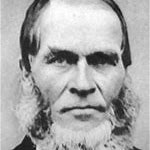 | Mr Hiram Edson |
 | Mr Joseph Bates |
| 1 | Mr Hiram Edson – Western New York | Doctrine of the Sanctuary |
| 2 | Mr Joseph Bates – New Hampshire Massachusetts | Observance of Sabbath Keeping |
| 3 | Mr James and Ellen G. White of Portland Maine | “Spirit of Prophecy” and “The Testimony of Jesus |
During the years 1844-1847 these three groups propagated their erroneous teachings, and it was in 1860 merged as one, and the name Seventh Day Adventists officially recognised.
In 1855 the Headquarters for the groups were in Battle Creek and in 1903 it moved to Takoma Park a suburb in Maryland Washington D.C.
Mrs Ellen White, 1827-1915 formerly Ellen Hermon, was recognised by the three groups as having the “spirit of prophecy” – “1 Corinthians 12” and she became the counsel of the movement and is generally recognised to be their main founder, prophetess and spiritual leader.
The Seventh Day Adventists consider themselves to be a “special remnant people”, ordained by God to revive truths neglected by the Christian Church.
Adventist Deception
Seventh Day Adventists are known historically for concealing their true identity and their doctrines. Due to the complex ways that they weave human teachings and false doctrines, into their more mainstream teachings, it is very difficult to recognise, the deceptiveness of their ways, and many Christians only see the orthodox ideas they teach.
Seventh Day Adventists do not openly declare themselves in both their holding of meetings, and their doctrinal bias. It isn’t until sometime after they have gained an audience or an entrance into an orthodox group of Gods people, that they become apparent, and then only where leaders recognise, the falseness of teaching. Often it is too late, and unrest, agitation and sometimes splits have occurred.
I know from personal experience when during a Pastorate a couple came into the Church where I was leading. We were a small Church and a young couple coming to join us with their family was very encouraging. However, very soon they started to hold gatherings in their home and when questioned further it was discovered that they were Seventh Day Adventists. I was naïve in regard to their doctrinal standpoint but soon discovered what they believed. Were they a “Christian couple?” who am I to judge. They said and did all the right things. One great thing occurred, however. This was a couple of colour and their child had “sickle cell disease” and on praying for the child God graciously completed healed the child. The couple left us soon after the revelation of their background beliefs.
Their main area of influence is usually upon the least experienced and more doctrinally gullible.
The charge of deception was written about in F.D. Nichols book “Answers and Objections” (Washington D.C.:Review and Herald Publishing Association, 1952, pages 421 & 423) where the charge is stated as follows…
“When Seventh-Day Adventist Ministers go into a community to hold a series of lectures they conceal their denominational identity. They then hope to draw into their audience people who would never have come if they knew Seventh Day Adventists were conducting the meetings. This is a form of deception. There is something the matter with a religious body that is afraid to identify itself as soon as it begins to carry on any activity in a community”.
Whilst Nichol answered the charge by saying that they do so because of the prejudice of people and stories they have heard about them, this still does not provide sufficient excuse for outright deception and concealment either in a public or private way of their doctrinal stand and aims.
Adventist Problems
Since the early 1970’s the Seventh-Day Adventist movement has gone through some considerable problems, in both areas of Administration and Doctrine.
On the Administrative side a number of Adventist Leaders and Pastors in the U.S.A. have been removed from their posts for supposed or proven financial impropriety and misappropriation of funds. As a result of investigations made by the F.B.I., Internal Revenue Service, and the Justice Department, some of their Administrators may have or did face charges for fraud.
Whilst problems of this sort are not solely confined to this organisation, this together with their shaky start, does throw considerable doubt on their veracity.
Doctrinally the movement has suffered significant difficulties, with a split between the members and leaders who hold orthodox mainstream beliefs and the followers of Ellen G. White who are in the supremacy, together with their emphasis on the more legalistic ideals.
I will now quote from the Vice President of the Seventh-Day Adventists General Conference written on April 29th, 1983 a Mr. W. Richard Lester, and I do so in order that it may support areas that will be spoken of later, in relationship to Mrs Ellen. White, he writes…
“As an attested agent of the prophetic gift we believe communications based on Ellen White’s revelatory experience to be trustworthy and dependable”.
Adventist Doctrine
In 1957 the Seventh-Day Adventist Movement released at their General Conference, for the first time a definitive and comprehensive list of their articles of faith in a volume entitled “Questions on Doctrine”, and it is that, now, which we shall start to concentrate our thoughts.
The Inspiration and Authority of Scripture
I will begin by quoting what the Adventist’s say in their “Questions on Doctrine”, volume Pages 26 to 28.
“Seventh-Day Adventists believe that all Scripture, both Old and New Testament, from Genesis to Revelation was “given by inspiration of God” – “2 Timothy: 3:16” – and constitutes the very word of God – the truth that “liveth and abideth for ever” – “1 Peter: 1:23”. We recognise the Bible as the ultimate and final authority on what is truth” (Page 26).
“Seventh-Day Adventists hold the Protestant position that the Bible and the Bible only is the sole rule of faith and practise for Christians. We believe that all theological beliefs must be measured by the living Word judged by its truth, and whatsoever is unable to pass this test, or is found to be out of harmony with its message, is to be rejected” (Page 28).
“We believe in the authority, veracity, reliability, and truth of the Holy Scriptures. The same union of the divine and the human that is manifested in Christ, exists in the Bible. Its truths, reveal are “given by inspiration of God” – “2 Timothy: 3:16” yet are couched in the words of men” (Pages 27,28).
On the surface, when one reads these words, it would appear, that no one could possibly have any area of argument or suspicion. In fact, so close to the orthodox statements of belief in the Inspiration and Authority of Scripture, are there statements, that none would think twice to question any further. There is a need to look deeper though. To accept on face value what has been said, would be a serious mistake, particularly, if the place of Mrs Ellen G. White in the whole picture of things, is not considered.
“Theopneustos” (θεόπνευστος)
The orthodox view of the “Inspiration and Authority” of Scripture is based upon what is commonly termed “Verbal Inspiration”, and what this title means in simple terms is that biblical inspiration is verbal, i.e., “God-breathed”. This indicates that the message of the writer is presented in words, words that were approved by the Holy Spirit as they were expressed by the writer. It does not mean the same as each word being dictated to the writer, in the manner of an office manager to a secretary.
The lord did not give us His Word by dictation. Instead, the process has been seen as organic, wherein God does not override the talents, style, vocabulary, or grammar of the author to give us His message. He worked in and through these things to give us a book that is varied in its content and style but unified in its teaching. The writer described in human language what he saw of God’s message, consciously applying his mind to the description and exhortations. The Holy Spirit, however, being the revealer and motive force in the process. The Holy Spirit ensured that the words were adequate to the desire of God.
The word “Inspiration” is a Greek word “Theopneustos” (θεόπνευστος) and it literally means “God-breathed” it occurs only once in the Bible in “2 Timothy 3:16”, and it defines an out-breathing as opposed to an in breathing, or as the New Bible Dictionary describes “divinely expired rather than inspired”.
It is very important to understand this definition, because Mrs Ellen G White states…”It is not the words of the Bible that are inspired. Inspiration acts not on the man’s words or his expression but on the man himself, who, under the influence of the Holy Ghost is imbued with thoughts”. (Neufeld, “Inspiration of Scripture,-Seventh Day Adventist Encyclopaedia, page 585).
I hope that we can see the subtle difference here and that this statement is a direct contradiction of what theologians and orthodox Christian teaching presents.
The Christian Church recognises that the Bible in its entirety, without deletion or addition, is the sole and ultimate authority in matters of faith and life. An essential characteristic of Scripture is its infallibility. To confess that the bible is infallible is to confess that the Scriptures are incapable of teaching any error. Taken in itself, this is a term that strongly presents the perfection of Scripture. The prophets and apostles not only did not err – but they could also not err when writing Scripture. Regrettably, some theologians in recent years have redefined the concept of infallibility in order to promote a lower view of the bible, so it is important to ask people what they mean when they say the Scriptures are infallible.
It’s interesting to note that the Scriptures are infallible not people and yet the Roman Catholic Church cult professes the following: – “Papal infallibility is a dogma of the Catholic Church which states that, in virtue of the promise of Jesus to Peter, the pope when appealing to his highest authority is preserved from the possibility of error on doctrine “initially given to the apostolic Church and handed down in Scripture and tradition”. This doctrine was defined dogmatically at the First Vatican Council of 1869–1870 in the document Pastor aeternus, but had been defended before that, existing already in medieval theology and being the majority opinion at the time of the Counter-Reformation.
In addition, another characteristic is the inerrancy of Scripture. Inerrancy is a natural outflow of infallibility in the traditional, orthodox sense. Since the authors could not err when writing Scripture, the bible contains no affirmations of anything that is contrary to fact. Inerrancy is a quality of the original text of the bible. Translations may err, but the original manuscripts penned by the prophets and apostles do not.
The Seventh Day Adventists however place the writings and visions of Ellen White on a par with the writers of the Bible itself, and by their actions, even if not by their words, give her credit for the same inspiration, that was given to the writers of the Word of God.
The Seventh Day Adventists state that Mrs White had the “Gift of Prophecy” as spoken of in “1 Corinthians 12:10”, and this would in itself is not wrong to state. Where it is out-of-line is though is that they consider her extra-Biblical authority, to be based on this gift, and that when she exhibits it, the same inspiration, that was mentioned earlier is being manifested.
The Bible does not require the mature child of God to test Scripture, but it does encourage us to do so with statements given by prophecy. Statements that were made by Ellen White and her writings, which were many, unlike the writings and statements of “normal Christians”, were not subject to examination and criticism in the same way as others.
One of their Official Publications is The Review and Herald, and the 30-year Editor of this Mr Francis Wilcox once wrote of Mrs White in these terms…”White served God the way Samuel, Elijah, and John the Baptist did…Furthermore her writings “constitute a spiritual commentary upon the Scripture, a divine illumination of the Word”. (Gary Land, “Shaping the Modern Church, 1906-1930,” in Adventism in America., page 159).
A former leader in the Seventh Day Adventist Movement, and one who was a close friend of the White’s, and one of some ability, by the name of Mr Dudley M. Canright wrote the following…”There is not a doctrine nor a practise of the church, from the observance of the Sabbath to the washing of feet, upon which she has not written. That settles it. No further investigation can be made on any of these matters, only to gather evidence and construe everything to sustain it. How, then, can their ministers or people be free to think and investigate for themselves? They cannot, dare not, and do not.” (D.M. Canright, Seventh Day Adventism Renounced, (Grand Rapids: Baker, 1961 page 135).
We cannot move on in examining Adventists doctrinal statements without also considering the “Visions & dreams” Mrs White is was so well known for.
It was only two months after the “Great Disappointment”, whilst Miss Ellen Harmon later to become Mrs White had the first of her famous visions. Successive visions all supported and provided a foundation for the doctrines that the Adventist Movement propounded, after the failure of their belief in the coming of Christ had not been fulfilled.
The manner in which she received her visions were at times, dangerously close to the same way that Mediums and Spiritualists, and others of the occult receive theirs.
Contemporary observers would state that when a vision had ended, she was limp and strengthless, and had to be assisted to her chair. On one occasion when she was with a small group of Adventists, she fell to the floor writhing in anguish, during which time she received God’s message – (Walter Martin, The Kingdom of the Cults (Minneapolis: Bethany House, 1985) page 15).
Ellen married James White in 1846, and at that time she had gained a large reputation for her prophetic gifts, and it was considered by James White, to be an enhancement of his ministry, as he was an Adventist lay preacher. Many considered her to be on the “lunatic fringe”, but she raised herself above criticisms by strengthening those in authority by confirmation of them through her visions, which would last from minutes to hours.
Ellen Whites husband was considered by many in his day to be the Head of the movement and he was also an Editor of the Review and Herald, but even he began to recognise the falseness of his wife’s visions and in 1951 he stopped publishing them. Some four years later he responded to those who were criticising him for this by stating “What has the Review to do with Mrs. W’s views…” (numbers, Prophetess of Health, pages 28-29). Strangely enough he was later asked to resign from his position as editor.
Many of the Seventh Day Adventist teachings are based upon Ellen White’s visions and dreams, and because of their acceptance of her prophetical gift, and belief in its inspiration, they contend that what she says, should naturally be obeyed.
She had between 1844 she it is reported by her husband to have had as many as 200 visions and perhaps as many as 2000 in her lifetime – (Don f. Neufeld, ed., “Visions,” Seventh-Day Adventist Encyclopaedia, Volume 10: Commentary Reference Series (Washington, DC: Review and Herald Publishing Association, 1966-page 1381 and “Prophet or Plagiarist?” Time, August 2, 1976, page 43).
The Investigative Judgement
Having now taken time to consider the Seventh-Day Adventist theories in regard to the Inspiration of the Bible, we continue on into examining one of the foremost, and most wholehearted areas of belief, which they hold fast to, and yet surprisingly enough, is little known of, even amongst their own adherents.
Consideration of the Investigative Judgment doctrine is a natural follow on from the Inspiration of Scripture, because again much of what the Seventh Day Adventists believe on the topic, is based upon Mrs Ellen G. White’s visions, and was brought to the forefront, as the only means of salvaging a toppling movement, after the “great disappointment”, i.e., the failure of Christ’s return.
The doctrine is based upon the idea, although erroneously, that Jesus Christ as part of His atoning work at Calvary, has been, and indeed is now, carrying out an investigative judgment, in what is by the Adventists termed the “heavenly sanctuary”, and He has been doing this since October 22nd, 1844, which as we have already seen, the date that was first established by them, as the date of Christ’s returning.
In (The Prophetic Faith of our Fathers, Volume 4, page 881) we read the following, and I quote this in order that a foundation can be laid, leading to a fuller understanding of the Adventist teaching. “We started and while passing through a large field I was stopped about midway of the field. Heaven seemed open to my view, and I saw distinctly and clearly that instead of our High Priest coming out of the Most Holy of the heavenly sanctuary to come to this earth on the tenth day of the seventh month, at the end of the 2300 days, He for the first time entered on that day the second apartment of the sanctuary; and that He had a work to perform in the most holy before coming to this earth”.
These are the words of Hiram Edson, who was a zealous “Millerite” hailing from western New York. The words were coined the very morning after, the failure of Christ’s return, and formed the only ray of hope that the disillusioned Adventists, could cling to, and cling they did with all fervour. It turned the “Great Disappointment” into a time of celebration for them.
In simple terms, the Seventh Day Adventists believe that Jesus Christ is at this very moment, conducting an investigation into the lives of all believers, and that investigation and its conclusions will determine whether an individual is “Saved or Lost”.
Ellen White wrote “As the books of the record are opened in the judgment the lives of all who have believed on Jesus come in review before God…When any sins remaining upon the books of the record, unrepented of and unforgiven, their names will be blotted out of the book of life, and the record of their good deeds will be erased from God’s remembrance. All who have truly repented of sin, and by faith claimed the blood of Christ as their atoning sacrifice, have had pardon entered against their names in the books of heaven; as they have become partakers of the righteousness of Christ, and their characters are found to be in harmony with the law of God, their sins will be blotted out, and they themselves will be accounted worthy of eternal life” – (Ellen G White, The Great Controversy. Mountain View, CA: Pacific Press Publishing Company, 1911 page 483).
What is the most objectionable aspect of these beliefs is that it calls into question and in fact apparently challenges the whole aspect of the orthodox teachings relating to the “Finished Work of Christ at Calvary and the Blotting Out of Sin”.
Jesus Christ, it is clearly taught in the Scriptures, when He went to Calvary bore God’s judgment for SIN singular, in Himself, dying “Once for All”. It is clearly understood, that whilst we without Christ as Saviour, are still deemed to be “Under God’s Judgment” for SIN in our lives, with Christ as Saviour, that Judgment is passed, in “John 5:24” it states “Verily, verily, I say unto you, He that heareth my word, and believeth on him that sent me, hath everlasting life, and shall not come into condemnation…” another translation puts it as “shall not come into condemnation; but is passed from death into life”.
In the Adventist view a single unrepented off sin, would mean that salvation is lost, we clearly understand that confession of our SINS plural, is encouraged by Scripture, for the purpose of maintaining fellowship, and not for the retaining of salvation.
Those who study God’s Word and recognise that it is itself a commentary upon itself, will readily understand that there are in fact two judgments, both in the future, and not taking place at this time.
Judgment One is (The Bema Seat of Christ) when all believers will stand before the Lord Jesus Christ, and be judged, this will be in order to determine not their salvation, but their rewards this we see clearly in “2 Corinthians 5:10” – “For we must all appear before the judgment seat of Christ, so that each of us may receive what is due us for the things done while in the body, whether good or bad” NIV
As there is very little understanding of this fundamental doctrine it would be worthwhile spending a short-term examining exactly what it is.
Let me say though right at the start it’s important to notice that such a man does not suffer the loss of his salvation, but the loss of reward in this judgment time. The stress is not on a man’s relationship to Christ, but upon service to Christ.
What is the ‘Bema’ Seat of Christ?
The Judgement Seat of Christ
The idea finds its foundation using imagery from Paul’s day. During the ancient Olympics, the judge sat along the finish line. His purpose was not to determine whether or not the participants actually ran the race. If they got that far, then they completed the course. But the Judge at the Bema seat determined how they came in, first, second, and so on, and he handed out the rewards. That is the imagery that the Bible gives us of the Believer’s Judgment. The ‘Bema’ seat of Christ will happen immediately following the translation / rapture of the Church at the coming of Christ.
Look with me at “1 Thessalonians 4:14 -17” – “For we believe that Jesus died and rose again, and so we believe that God will bring with Jesus those who have fallen asleep in him. According to the LORD’s word, we tell you that we who are still alive, who are left until the coming of the LORD, will certainly not precede those who have fallen asleep. For the LORD himself will come down from heaven, with a loud command, with the voice of the archangel and with the trumpet call of God, and the dead in Christ will rise first. After that, we who are still alive and are left will be caught up together with them in the clouds to meet the LORD in the air. And so, we will be with the LORD forever” NIV and also “1 Corinthians 15:51-52” – “Listen, I tell you a mystery: We will not all sleep, but we will all be changed- in a flash, in the twinkling of an eye, at the last trumpet. For the trumpet will sound, the dead will be raised imperishable, and we will be changed”. The place of the Bema seat of Christ is placed in the sphere of the heavenlies” NIV
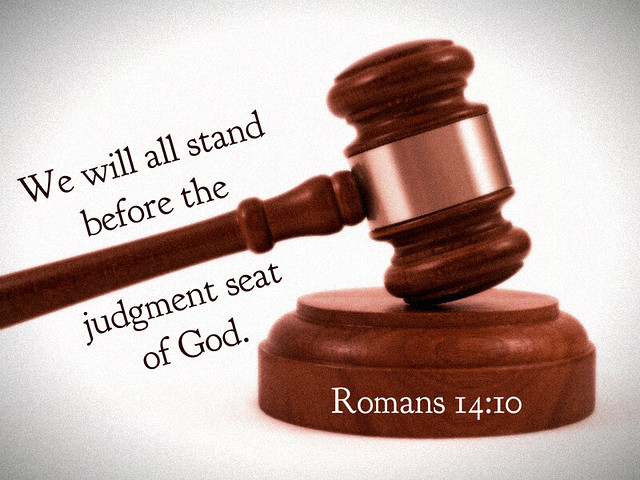
When it comes to considering this really important topic there are really two prominent Scriptures that provide us with understanding and they derive their meaning from two Greek words “bemati (βῆμα, ατος, τό) and bematos (τοῦ βήματος)” the first being: – “Romans 14:10” – “You, then, why do you judge your brother or sister? Or why do you treat them with contempt? For we will all stand before God’s judgment seat. It is written: “‘As surely as I live,’ says the Lord, ‘every knee will bow before me; every tongue will acknowledge God.’” So then, each of us will give an account of ourselves to God”.
The second is “2 Corinthians 5:10” – “For we must all appear before the judgment seat of Christ, so that each of us may receive what is due us for the things done while in the body, whether good or bad”
In the two passages above when the term “judgement seat” is used it is referring to a Divine tribunal in which every single believer will one day stand. I’m sure we remember the Scripture found in “John 5:22,27” which informs us that the Father has given all judgement unto His Son.
The Judgement of Believers
It is a fact that all of us who claim to be Christians will one day have everything we have done made public if we do not believe this then we do not believe what the Scripture says in “1 Corinthians 3:13-15” – “…Every man’s work shall be made manifest: for the day shall declare it…” Its purpose is to make a public manifestation of the essential character and motives of the individual Christian. This judgment is not to determine what is ethically good or evil, but rather that which is acceptable and that which is worthless/unprofitable to the work of Christ.
While it is possible to hide the true quality of one’s service for Christ in this life, there will be a tie of reckoning for the Christian.
Results of Christ’s Judgement
What will be the eventual result of this judgment? Well! its two-fold – :
- A reward received.
- A reward lost.
Everything he or she has devoted himself or herself to in this life (those things done in his own strength and for his own glory) shall be burnt up suddenly. However, unlike the Seventh Day Adventists contention “…he himself shall be saved; yet so as by fire” – “1 Corinthians 3:15”
What is the ‘Great White Throne Judgement’
The Judgement Seat of God
Judgment Two is when all mankind outside of a saving knowledge of Jesus Christ as Saviour, will appear before a just God as revealed in “Revelation 20: 11-15” – “Then I saw a great white throne and him who was seated on it. The earth and the heavens fled from his presence, and there was no place for them. And I saw the dead, great and small, standing before the throne, and books were opened. Another book was opened, which is the book of life. The dead were judged according to what they had done as recorded in the books. The sea gave up the dead that were in it, and death and Hades gave up the dead that were in them, and each person was judged according to what they had done. Then death and Hades were thrown into the lake of fire. The lake of fire is the second death. Anyone whose name was not found written in the book of life was thrown into the lake of fire” NIV and they will be judged for what they have done with Jesus Christ, then being assigned to the Lake of Fire.
As we now move back to the Seventh Day Adventist teaching of Investigative Judgment the subject is significantly offensive because in this teaching there a significant dilution of Christ’s finished work at Calvary, and the implied additional concept, that Satan has a fundamental part to play in the final blotting out of sin.
Ellen White states in (The Great Controversy, pages 485 & 486, the following)…”When the investigative judgment closes, Christ will come, and His reward will be with Him to give to every man as his work shall be…As the priest, in removing the sins from the sanctuary, confessed them upon the head of the scapegoat, so Christ will place all these sins upon Satan, the originator and instigator of sin. “The scapegoat, bearing the sins of Israel, was sent away unto a land not inhabited” (Leviticus 16:22); so, Satan, bearing the guilt of all sins which he caused God’s people to commit, will be for a thousand years confined to the earth, which will then be desolate, without inhabitant, and he will at last suffer the full penalty of sin in the fires that shall destroy the wicked”.
Seventh Day Adventists will purport to not accepting this view that is put forward, but the fact is that any of them who contradict it, or any other of Ellen White’s, receive severe judgment from their senior peers.
One such example is that of Desmond Ford who had his ministerial credentials removed for opposing the viewpoint. Desmond Ford was an Australian and one of their prominent theologians, but in 1983 he and over ten others were forced out of the Adventist Church for calling into question the Investigative Judgment theory.
Man’s Spiritual Side
Whilst orthodox teaching varies in some areas regarding the position of both Soul and Spirit being a fundamental part of mankind’s nature, one thing is patently clear, the fact that the Soul and Spirit are eternal in their constitution and that death, as we know it is defined as the “disillusion of the Soul and the Spirit from the body”.
When a person dies, his or her physical body is either buried or burned, to face corruption, as is the way with all things, but the Soul and the Spirit is then “absent from the body”. In the case of the regenerate however that means, “with the Lord”. We as Christians are in a place of “waiting” along with the pagan un-regenerate, however they are “not with the Lord”.
In both the cases of the regenerate and un-regenerate man, there is a judgment awaited, for the Christian it is as we have seen the “bema seat of Christ” and the Non-Christian the “Great White Throne Judgment”.
The Seventh Day Adventists would have us believe and contend that the Soul cannot exist apart from the Body, and that it is an inseparable and essentially integral part of the other, and that they constitute one single unit, even in death. Where do they teach this? It is seen in their teaching in (Questions on Doctrine pages 511 & 515).
To hold their belief means by definition that the Body and the Soul are confined to the grave in practical terms, and that after the Body is decayed either via the normal manner back to dust or by cremation, that the Soul and Spirit is still confined in the place where the Body was last left to rest, this naturally stretches credulity to the n’th degree, and completely outside of orthodox teaching on the topic, and is presented without any weight of Biblical evidence.
The teaching of Jesus are very clear on the subject He Jesus through just the accounts of “Luke 16:19-31” which relates to the Rich Man and Lazarus leaves no doubt. In addition, the teaching of the Apostle Paul in “2 Corinthians 5:1-8” plus “Philippians 1:23-24” shows to us without any area of ambiguity that there is a conscious existence after natural death. In Thessalonians for instance Paul clearly speaks of the Soul and Spirit being re-united with the Body, at Christ’s return, thus showing once again their disillusion at death.
Continuing this same line of thought regarding what is termed “Soul-Sleep”, when the Adventists speak of it, they are in reality only referring to Christians, because they believe that the wicked, and un-regenerate (the two are defined separately by them) cease to exist at death, and it is only the Christian who is promised eternal existence, and given eternal properties to their Souls and Spirits and Bodies, thus denying entirely the Great White Throne Judgment spoken of so clearly previously and in the Book of Revelation.
The Adventists contend that a “God of Love” who would send His Son to die for mankind, could never pronounce anybody to eternal torment. The Bible says in “Romans 3:4” – “Let God be true, and every man a liar” also in “Matthew 25:46” – “…And these shall go away into everlasting punishment, but the righteous into life eternal”.
The Adventist line of thought on the matter is portrayed from the following three items, which come from their “Questions on Doctrine 1957.”
| 1 | Because everlasting life is a gift of God The wicked do not possess this…they “shall not see life” no murderer hath eternal life abiding in him | “Romans 6:23” “John 3:36” “1 John 3:15” |
| 2 | Because eternal torment would perpetuate and immortalise sin, suffering and woe, and contradict, we believe, divine revelation, which envisions the time when these things shall be no more. Because it seems to us to provide a plague spot in the universe of God throughout eternity and would seem to indicate that it is impossible for God Himself ever to abolish it. Because in our thinking it would detract from the attribute of love as seen in the character of God and postulates the concept of a wrath which is never appeased. | “Revelation 21:4” |
| 3 | Because the Scriptures teach that the atoning work of Christ is to “put away sin” …first from the individual, and ultimately from the universe. The full fruition of Christ’s sacrificial, atoning work will be seen in a redeemed people but in a restored heaven and earth | “Hebrews 9:26” “Ephesians 1:14” |
Sabbath Keeping
Earlier in our study together we saw clearly how the Adventist Movement, attribute considerably more credence to the “visions” of Ellen White than the straight, clear, and transparent teachings of Scripture. They instead like many other cults, such as the Jehovah Witnesses, Mormons, Roman Catholics compromise the truth, in order to validate their own ideas and desires. In doing so they lead many with them to perdition.
The Seventh Day Adventists are generally known, amongst the “Religious Un-Regenerate, and unfortunately the ever-growing community of less well taught Christian” who are fed on a diet which leaves them both impoverished and spiritually weak and the world at large, as the Sabbath Keepers. This sounds innocuous and innocent on the surface and a little “well quaint”.
It is a Sabbath Keeping they are known for perhaps more than anything else as their name denotes. As a result, they have gained a degree of religious acceptance, rather than being identified and regarded, as the Non-Christian Cult which they are.
The Adventist’s strength and fortitude in respect of the Sabbath is provided from a vision of Ellen White on April 3rd, 1847 where she states she saw…”the law of God in the ark of the heavenly sanctuary with a halo of light encircling the fourth commandment”. (Seventh Day Adventist Encyclopaedia page 1407).
The Bible tells us so clearly that we should test all things particularly in the context of spiritual utterances, and this testing is in order to see how the utterance meets with the “plumb line” of Scripture, and not as is the practise of many cults, to do the opposite.
As a Christian Church, why should we stand strongly against Sabbath Keeping, and hold to the Lords Day? Well! the answer is quite simple. Christians believe that Jesus Christ is an end to the Law, not that He abolished it, but that He in every part, fulfilled it, and in so doing removed its yoke, from the shoulders of all believers in Him.
We are “not under law” we are now governed by the in and out working of God’s grace in us, and all the requirements of Law keeping are completely accomplished in Jesus.
The Sabbath Terminated
The Scriptures are emphatic in telling us that the requirement to keep the Sabbath has been terminated. New Testament data lead to the conclusion that the Law of Moses (with all of its components – including the sabbath) has been abrogated meaning it has been – “repudiated · revoked · repealed · rescinded · overturned · overruled · overridden · done away with · annulled · cancelled · broken off · invalidated · nullified · made void · negated · dissolved · countermanded”.
Paul affirmed that the “law of commandments” was abolished “through the cross” – “Ephesians 2:14” – “The Messiah has made things up between us so that we’re now together on this, both non-Jewish outsiders and Jewish insiders. He tore down the wall we used to keep each other at a distance. He repealed the law code that had become so clogged with fine print and footnotes that it hindered more than it helped. Then he started over. Instead of continuing with two groups of people separated by centuries of animosity and suspicion, he created a new kind of human being, a fresh start for everybody.” The Message
In a similar vein, the “bond written in ordinances” which contained such things as feast days, sabbaths, etc. were also removed, having been nailed to the Cross “Colossians 2:14-17” – “Entering into this fullness is not something you figure out or achieve. It’s not a matter of being circumcised or keeping a long list of laws. No, you’re already in insiders not through some secretive initiation rite but rather through what Christ has already gone through for you, destroying the power of sin. If it’s an initiation ritual you’re after, you’ve already been through it by submitting to baptism. Going under the water was a burial of your old life; coming up out of it was a resurrection, God raising you from the dead as he did Christ. When you were stuck in your old sin-dead life, you were incapable of responding to God. God brought you alive right along with Christ! Think of it! All sins forgiven, the slate wiped clean, that old arrest warrant cancelled and nailed to Christ’s cross. He stripped all the spiritual tyrants in the universe of their sham authority at the Cross and marched them naked through the streets. So, don’t put up with anyone pressuring you in details of diet, worship services, or holy days. All those things are mere shadows cast before what was to come; the substance is Christ” The Message
Sabbatarians will allege, that only the ceremonial features such as the animal sacrifices of the Mosaic covenant were abolished at the cross, with the moral elements of the law such as the ten commandments continuing on to today. Where is the biblical proof that this is correct? There is none.
Their position is arbitrary, artificial, and does not stand the test of scripture. The New Testament Law replaced the entire OT Law. It was a complete replacement not a partial one.
Jesus is clearly seen whilst in His earthly ministry keeping the Jewish Sabbath, and His Disciples with Him, but from very early after His death and resurrection the disciples are seen to be meeting on the 1st Day of the Week and observing this as their Sabbath and calling it the Lord’s Day.
We are not saved by law keeping, but the Adventists do not distinguish correctly between Law and Grace, and they place a heavy burden on people to keep the Law of the Saturday Sabbath.
First Century Christian Practice
There is no evidence that the early church observed the Sabbath with any apostolic approval. Yes, it’s true that the apostles frequented the synagogues on the Sabbath for the purpose of proclaiming the gospel. That is where the greatest concentration of Jews would have been see “Acts 13:14” – “Acts 17:1-2” and the message regarding Jesus was to be spoken first to them “Romans 1:16” – “For I am not ashamed of the gospel, because it is the power of God that brings salvation to everyone who believes: first to the Jew, then to the Gentile”
However, there is no known evidence that the early Church, with the authority of divine guidance, came together to worship God on the Sabbath day, nor did they move the Sabbath to Sunday.
The Kingdom of Christ was established on the day of Pentecost – “Acts 2:1” – “And when the day of Pentecost was fully come, they were all with one accord in one place.” which always fell on “the morrow after the sabbath” – “Leviticus 23:15-16” – “From the day after the Sabbath, the day you brought the sheaf of the wave offering, count off seven full weeks. Count off fifty days up to the day after the seventh Sabbath, and then present an offering of new grain to the Lord.” KJV, hence, on Sunday. So, the Church started out meeting for worship on the first day of the week not to observe the Sabbath – consider “Acts 2:42” – “They devoted themselves to the apostles’ teaching and to fellowship, to the breaking of bread and to prayer.”
The disciples at Troas “were gathered together” [passive voice] upon “the first day of the week” to break bread, i.e., to worship, “Acts 20:7”. The specific day of meeting was no accident. Though Paul was anxious to get to Jerusalem “Acts 20:16”, he waited seven days for the opportunity to assemble with the church.
Moreover, the passive voice (see above) indicates that someone other than the disciples orchestrated the assemblage; it was of divine initiative. It was not a commandment of New Testament Law. It simply meant that they decided to “meet” on the first day of the week. It says nothing about keeping the Sabbath.
The Saints in Corinth were assembling, and contributing into the Church treasury, “every first day of the week” – “1 Corinthians 16:2”.
The Gospel narratives, of course, make it clear that the resurrection occurred on Sunday. While “Revelation 1:10” would not be conclusive by itself, the very fact that the day is specifically mentioned is significant.
While it was true that some weak or uninformed Christians had a problem making a clean break with the Mosaic ways what does the Scripture say to us about this now and then? – “Romans 14:1” – “Welcome with open arms fellow believers who don’t see things the way you do. And don’t jump all over them every time they do or say something you don’t agree with even when it seems that they are strong on opinions but weak in the faith department. Remember, they have their own history to deal with. Treat them gently” The Message Also in “Galatians 4:10-11” we read also “Earlier, before you knew God personally, you were enslaved to so-called gods that had nothing of the divine about them. But now that you know the real God or rather since God knows you how can you possibly subject yourselves again to those paper tigers? For that is exactly what you do when you are intimidated into scrupulously observing all the traditions, taboos, and superstitions associated with special days and seasons and years. I am afraid that all my hard work among you has gone up in a puff of smoke!”, it is important to recognise that inspired apostolic teaching sought to correct this error.
The Adventist teaching on this matter, again using the words of heretic Ellen White in fact teach that the “Mark of the Beast” will be Sunday Observance, and she states this in these words…”Sunday keeping is not yet the mark of the beast, and will not be until the decree goes forth causing men to worship the idol sabbath the time will come when this day will be the test, but the time has not yet come” (Seventh Day Adventist Encyclopaedia page:l407)
We recognise clearly that the Law as presented to Moses including the 10 Commandments was comprised of four parts – Ceremonial, Moral, Civil, and Judicial – and all four parts constituted one whole law, it was a complete unit, with each section being inseparable from the other. It was given to the people of Israel, in order that they would recognise the futility of human strength and accomplishment, in regard to being acceptable to God.
The Adventists however have chosen to take one section of the law, the Moral section, and to separate it from the rest, claiming that the moral aspects of the law, and in particular the 4th commandment, the keeping of the sabbath, was instituted at creation, and has never been superseded.
The practise of Sabbath Keeping was as a religious act instituted with Moses in “Exodus 20:8-11” and there is no evidence to state that the early patriarchs were sabbath keepers. In addition to this, we see that Gentiles, i.e., those outside of the Jewish Faith, which is the majority of the Christian Church, were never required or obliged to maintain the law, in fact those Jews who tried to place Judaistic rules upon them, were severely condemned by the Apostle Peter, in the Acts of the Apostles.
The Sabbath was given by God to Israel as a Token of His Covenant with them, “Exodus 31:16-17”, in the same way as a Bow in the Sky is given as a Token that God will never again flood the earth.
When Jesus came and died, He fulfilled every aspect of the Law, and put an end to its impossible yoke upon the Christian believer. It’s important though to recognise that the Bible clearly states that we should not judge the Christian believer on it. The two Scriptures that follow are worthy of comparison – “Colossians 2:16” and “Hebrews 4:9-11”.
The Adventists contend that the true Sabbath (Saturday) was changed by the Roman Catholic Church, and they state…”We, as Adventists, believe there has been a wholly unauthorised, unwarranted, and presumptuous change in the Sabbath by the Catholic, or great Roman, apostasy as prophesied by Daniel” (Questions on Doctrine pages 166-69)
A number of early Church Fathers ranging from A.D.00 in the Epistle of Barnabas and A.D.324 with Eusebius, all speak of the sabbath on the first day of the week.
| Eusebius (A.D. 324), known as the “father of church history,” stated that Sabbath-observance does not “belong to Christians.” On the other hand, he asserted that Christians “celebrate the Lord’s days . . . in commemoration of his resurrection” (26,113). |
| The Didache (c. A.D. 120) declares that “every Lord’s day” the Christians gather themselves together and “break bread” (ANF.VII.381). |
| The Epistle of Barnabas (c. A.D. 120), in discussing such things as incense, new moons, and Sabbaths, says that the Lord “abolished these things” in deference to “the new law of our Lord Jesus Christ” (ANF.I.138). Later, it is affirmed: “Wherefore, also, we keep the eighth day with joyfulness, the day also on which Jesus rose again from the dead” (I.147). |
| Justin Martyr (A.D. 140) declared that “on the day called Sunday” the primitive Christians met for worship. He further stated that this was the day on which Christ was raised from the dead (I.186). |
| Clement of Alexandria (A.D. 194) spoke of the one who “keeps the Lord’s day” as “glorifying the Lord’s resurrection in Himself” (ANF.II.545 |
| Tertullian (A.D. 200) argued that the “old law” had been consummated; thus the “observance of the Sabbath is demonstrated to have been temporary” (ANF.III.155). Elsewhere he says that “Sabbaths are strange” to Christians, and that they share together “the Lord’s day” (70). |
To hold that the Sabbath is an obligation on the Christian Church, brings the bondage of the Law, which Christ came to set us free from; but it is equally important that both in attitude and practise, we maintain a day in the week which is devoted to the Lord. A day in which we meet together and fellowship with each other, not in a legalistic way, but in commitment to one another and to Christ, it happens to be Sunday.
“Hebrews 10:25” reminds us to “…not forsake the assembling of ourselves together” – Sunday isn’t to be considered as a day to “do what you like in” it is the Lords Day and has a Sanctifying effect upon the believer and reveals the Lordship of Christ.
Conclusion: –
This study on the Seventh Day Adventist Movement, may have appeared to be considerably scathing, however I make no apologies for that, except to say that it is not the individual upon which the focus is centred, but the doctrine, and the methods utilised to deceive people into further darkness and ensnarement of the devil.
We should pray, and pray vigorously for them, in order that God by the work of the Holy Spirit, who is the revealer of all truth, and the one who brings light, to bring that light into their confused and darkened minds, and that they truly come into a releasing and saving knowledge of Jesus Christ as Saviour.

